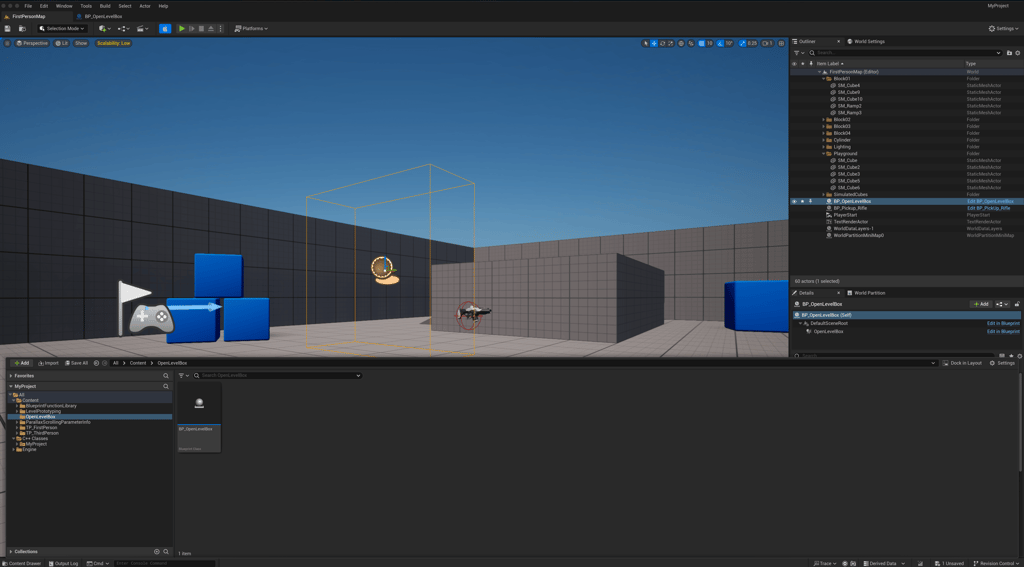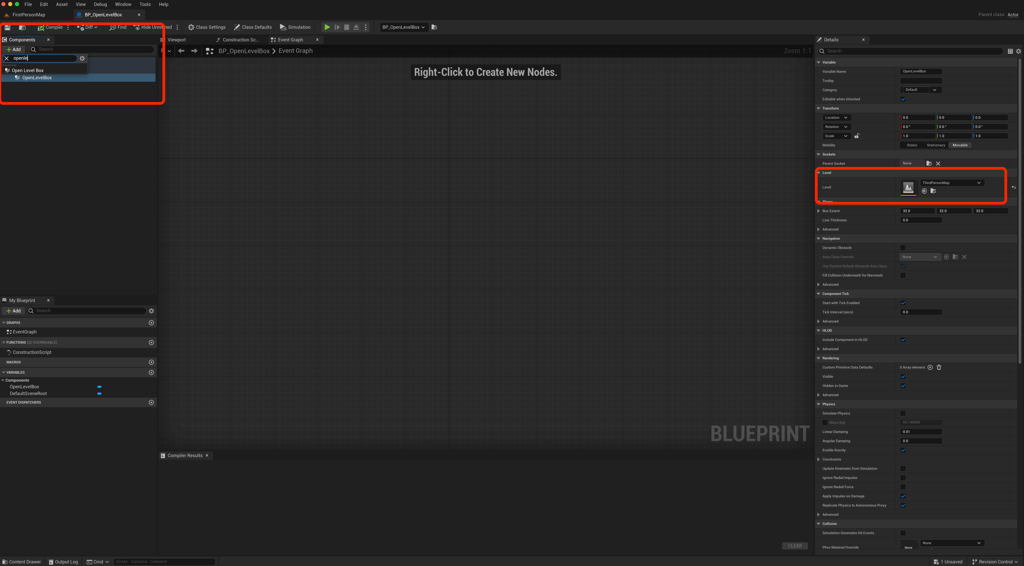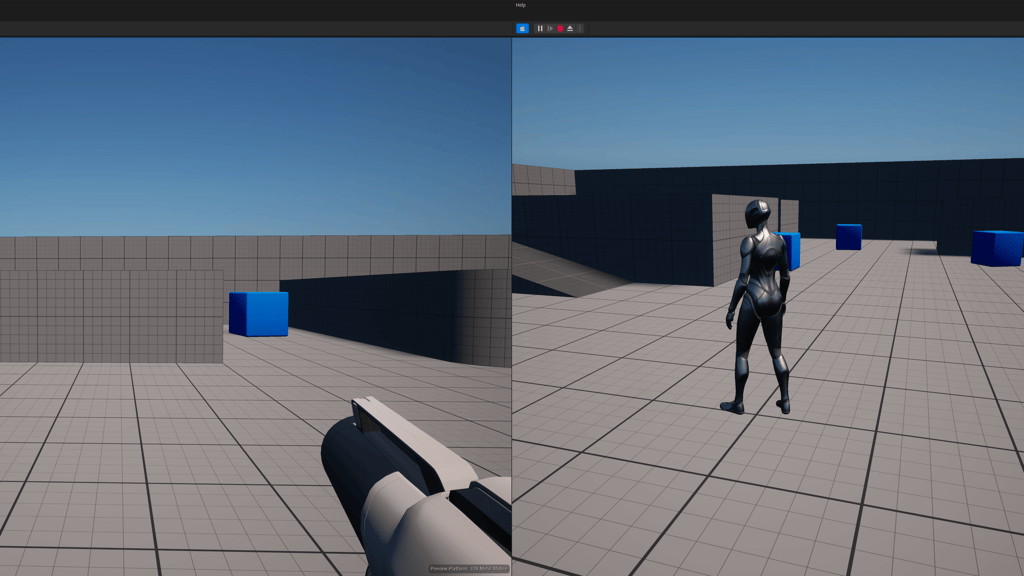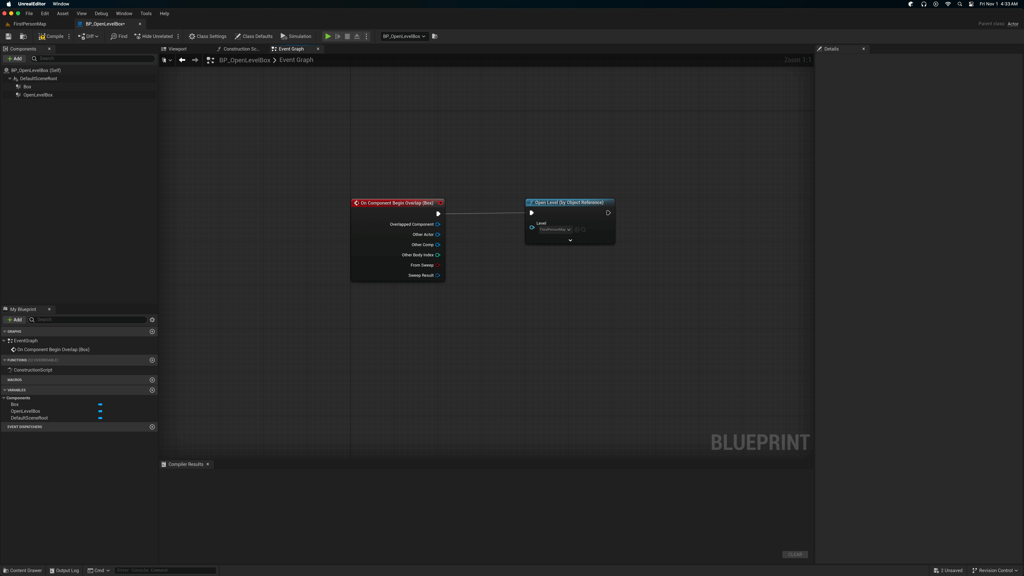How to Change Levels in Unreal using C++
Quick snippet on how to use OpenLevelBySoftObjectPtr to change levels/maps in Unreal Engine 5

Game Engine
Unreal Engine 5.4.4
IDE
Rider 2024.2.7
Project Name
MyProject
I created a simple box collision to test switching levels in Unreal Engine 5 using C++. Sometimes it's simpler to do it in Blueprints, but I wanted try some new things.
I created a new Unreal class component with parent UBoxComponent and named it OpenLevelComponent. In the header file I added a Level variable and a OnBoxBeginOverlap function to bind to the overlap event.
OpenLevelComponent.h
#pragma once
#include "CoreMinimal.h"
#include "Components/BoxComponent.h"
#include "OpenLevelBoxComponent.generated.h"
UCLASS(ClassGroup=(Custom), meta=(BlueprintSpawnableComponent))
class MYPROJECT_API UOpenLevelBoxComponent : public UBoxComponent
{
GENERATED_BODY()
public:
UPROPERTY(EditAnywhere, BlueprintReadWrite, Category = "Level")
const TSoftObjectPtr<UWorld> Level;
protected:
// Called when the game starts
virtual void BeginPlay() override;
/** Code for when something overlaps this component */
UFUNCTION()
void OnBoxBeginOverlap(UPrimitiveComponent* OverlappedComponent, AActor* OtherActor, UPrimitiveComponent* OtherComp, int32 OtherBodyIndex, bool bFromSweep, const FHitResult& SweepResult);
};
In the .cpp first include the "Kismet/GameplayStatics.h" file. Then in BeginPlay I added the dynamic binding to the component to use the overlap function. In OnBoxBeginOverlap I'm simply checking if the Level variable is valid, if true, I run UGameplayStatics::OpenLevelBySoftObjectPtr(World, Level);
OpenLevelComponent.cpp
#include "OpenLevelBoxComponent.h"
#include "Kismet/GameplayStatics.h"
// Called when the game starts
void UOpenLevelBoxComponent::BeginPlay()
{
Super::BeginPlay();
// Register the Overlap Event
OnComponentBeginOverlap.AddDynamic(this, &UOpenLevelBoxComponent::OnBoxBeginOverlap);
}
void UOpenLevelBoxComponent::OnBoxBeginOverlap(UPrimitiveComponent* OverlappedComponent, AActor* OtherActor, UPrimitiveComponent* OtherComp, int32 OtherBodyIndex, bool bFromSweep, const FHitResult& SweepResult)
{
UWorld* const World = GetWorld();
if (OtherActor != nullptr && !Level.IsNull())
{
if (!Level.IsValid())
{
Level.LoadSynchronous();
}
if (Level.IsValid())
{
UGameplayStatics::OpenLevelBySoftObjectPtr(World, Level);
}
}
}
While testing this component !Level.IsNull() was sufficient to ensure the variable was valid, but just in case I ran a conditional with !Level.IsValid() to Load the soft pointer just in case. Your experience may vary.
After rebuilding the project I can now add the component to any Blueprint.

After adding the component and selecting the level I can drag it into any map.


Changing levels via Blueprints is trivial. Below is an image of how easy it is to due the same thing without C++.

I hope this helps, happy coding.

Harrison McGuire